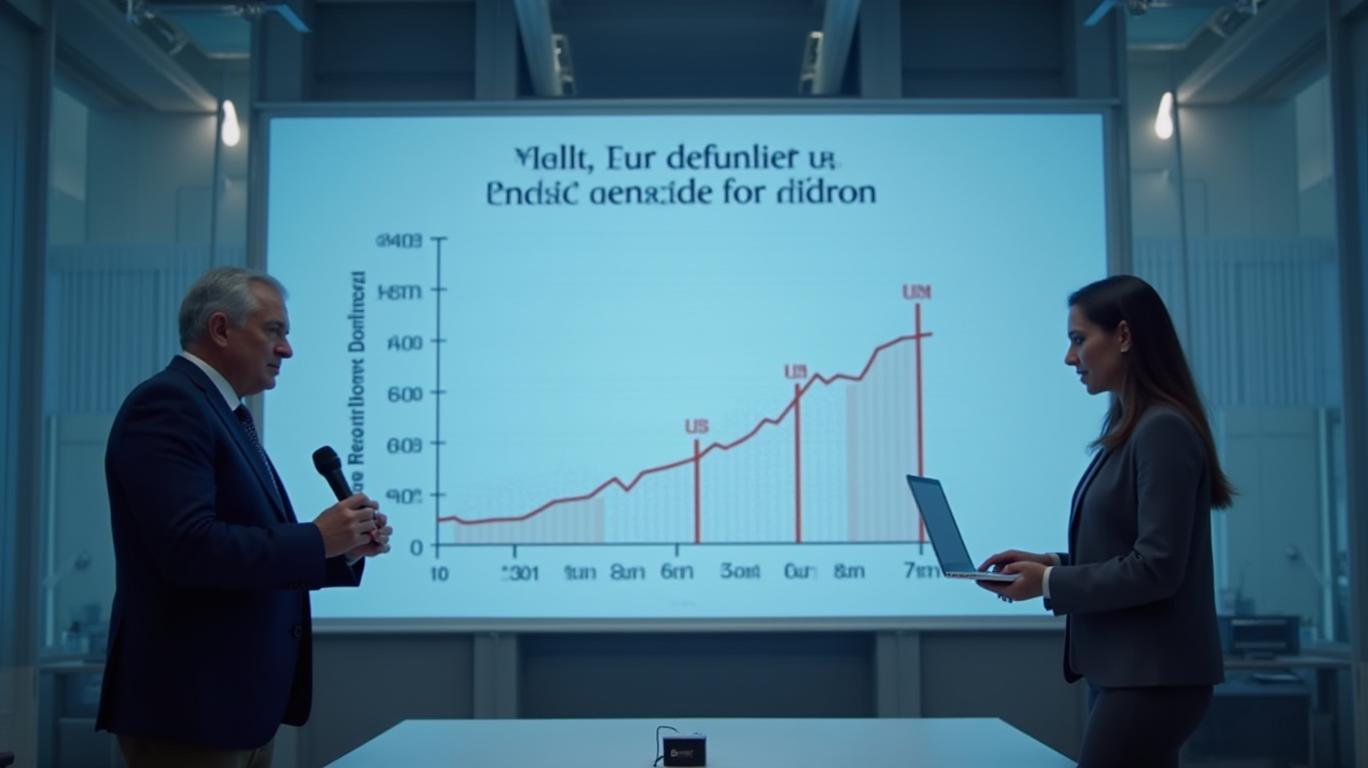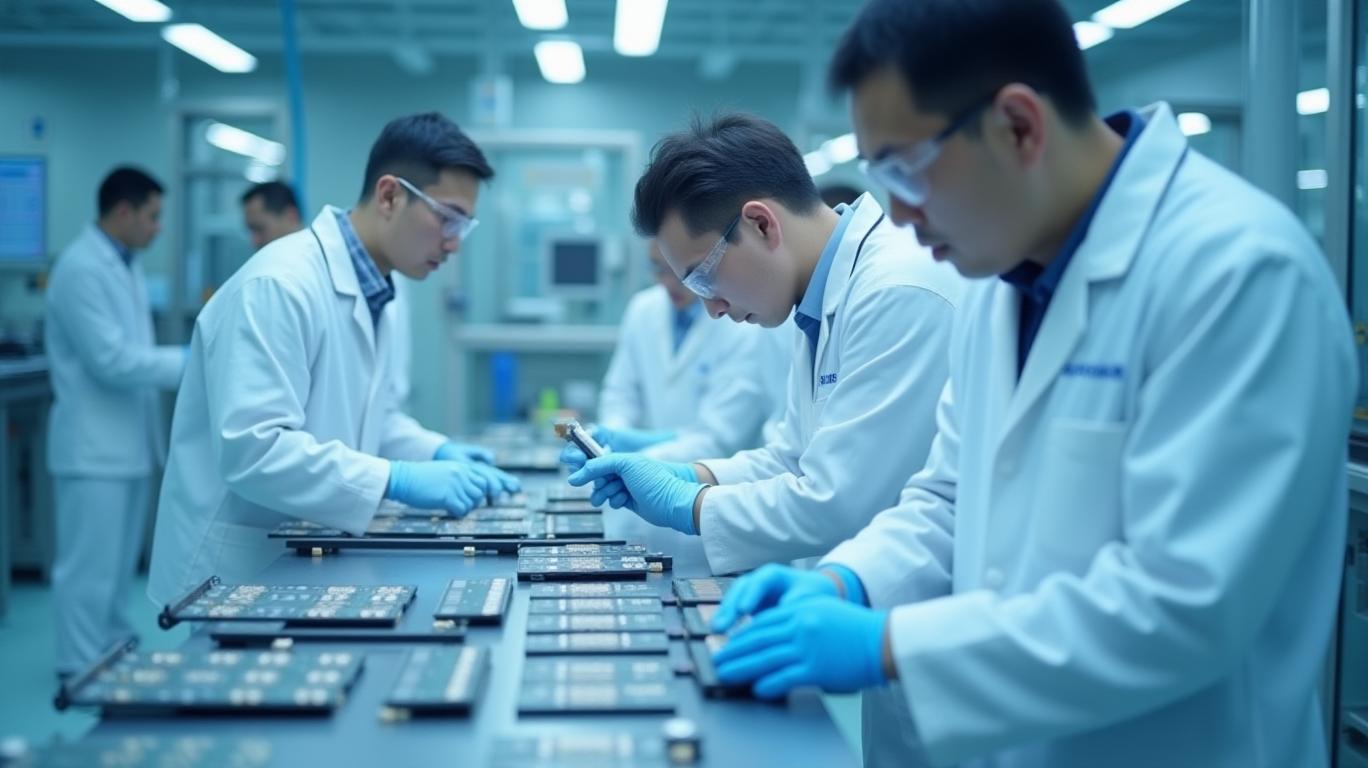TSMC: The Architect of the $1 Trillion Semiconductor Era
The global semiconductor industry is on the cusp of a historic milestone. Analysts project the market to surpass $1 trillion by 2030, fueled by the rise of generative AI (gen AI), advanced computing, and innovations in chip design. At the heart of this transformation is Taiwan Semiconductor Manufacturing Company (TSMC), whose technological leadership and strategic investments are positioning it as the linchpin of the next decade of growth. Here’s how TSMC is enabling—and benefiting from—the $1 trillion semiconductor era.
The Semiconductor Market’s Trajectory: From $700B to $1T in Five Years
The semiconductor market is experiencing a paradigm shift. In 2025, the industry is expected to hit $697 billion, a 11% surge from 2024, driven by surging demand for data center infrastructure, AI chips, and high-performance computing (HPC). From there, the market is forecast to grow at a 7%–9% annual rate, reaching $1 trillion by 2030. This growth is underpinned by three key trends:
1. AI-Driven Demand: Gen AI applications require specialized chips for training and inference, creating a premium market for high-value semiconductors.
2. Advanced Packaging: Innovations like 3D integrated circuits (3D ICs) and chiplet technology are enabling smaller, faster, and more power-efficient chips.
3. Material and Process Innovation: New materials (e.g., gallium nitride) and EUV lithography-driven advanced nodes (3–5 nm) are pushing the boundaries of chip performance.
Ask Aime: "Will TSMC lead the way in the $1 trillion semiconductor era?"

TSMC’s Dominance in Advanced Packaging: The Engine of Growth
TSMC’s leadership in advanced packaging is central to its role in the $1 trillion market. Its CoWoS platform—a 2.5D packaging technology that integrates multiple chips onto a single substrate—is critical for gen AI applications. Here’s the scale of its expansion:
- 2024: 35,000 wafers per month (wpm) of CoWoS capacity.
- 2025: Doubling to 70,000 wpm (a 100% YoY increase).
- 2026: Further scaling to 90,000 wpm (a 30% YoY rise).
This expansion targets the high-value gen AI chip market, which accounts for <1% of total wafer shipments but ~20% of semiconductor revenues in 2024. For example, a single CoWoS-packaged AI chip for data centers can command prices exceeding $10,000, far outpacing the average chip’s revenue contribution.
Ask Aime: How will the semiconductor market's growth affect TSMC's leadership?
Geopolitical Resilience and Supply Chain Strategy
TSMC’s global footprint and technological edge are critical in navigating geopolitical risks. While U.S.-China trade tensions and export controls on advanced chips pose challenges, TSMC has diversified its operations:
- Taiwan: Home to its most advanced 3–5 nm foundries and EUV lithography facilities.
- U.S.: A $12 billion plant in Arizona (targeting 4 nm and 3 nm nodes) to serve U.S. clients.
- Japan: A joint venture with Sony to produce image sensors and logic chips.
- Europe: Exploring partnerships to meet EU’s chip manufacturing goals.
This strategy mitigates supply chain risks while ensuring access to cutting-edge technologies. TSMC’s control over EUV lithography—a bottleneck for advanced nodes—gives it an insurmountable lead over competitors like Intel and Samsung in the race to 2 nm and below.
Risks and Challenges: Navigating a Volatile Landscape
Despite its strengths, TSMC faces hurdles:
1. Talent Shortages: A global deficit of engineers skilled in AI chip design and advanced manufacturing could delay innovation.
2. Geopolitical Uncertainty: U.S. export restrictions on advanced chips to China could limit TSMC’s market access.
3. Market Volatility: Overinvestment in gen AI could lead to excess capacity if demand slows.
However, industry consensus leans toward “underinvesting is riskier than overinvesting”, given the transformative potential of AI. TSMC’s capex plans—$30–35 billion annually through 2025—reflect this mindset, prioritizing long-term dominance over short-term profits.
Conclusion: TSMC’s Indispensable Role in the $1 Trillion Era
TSMC’s combination of technological leadership, strategic global expansion, and resilience to geopolitical headwinds cements its position as the architect of the $1 trillion semiconductor era. By 2026, its CoWoS capacity will support 90,000 wpm, enabling it to capture a disproportionate share of the gen AI chip market. With AI chips already contributing 20% of 2024 revenues despite representing <0.2% of shipments, TSMC’s focus on high-margin, advanced packaging is a masterstroke.
The semiconductor industry’s $1 trillion valuation hinges on innovations like those TSMC is pioneering. As AI adoption scales and 3D ICs become standard, TSMC’s dominance in chiplet design, EUV lithography, and advanced packaging will ensure its profits grow alongside the market. For investors, TSMC is not just a stock—it’s a decade-long bet on the future of computing, backed by cold, hard data.
The $1 trillion semiconductor era is coming. TSMC’s role? It’s already written in silicon.


_cbf77e8c1748017079428.jpeg)






